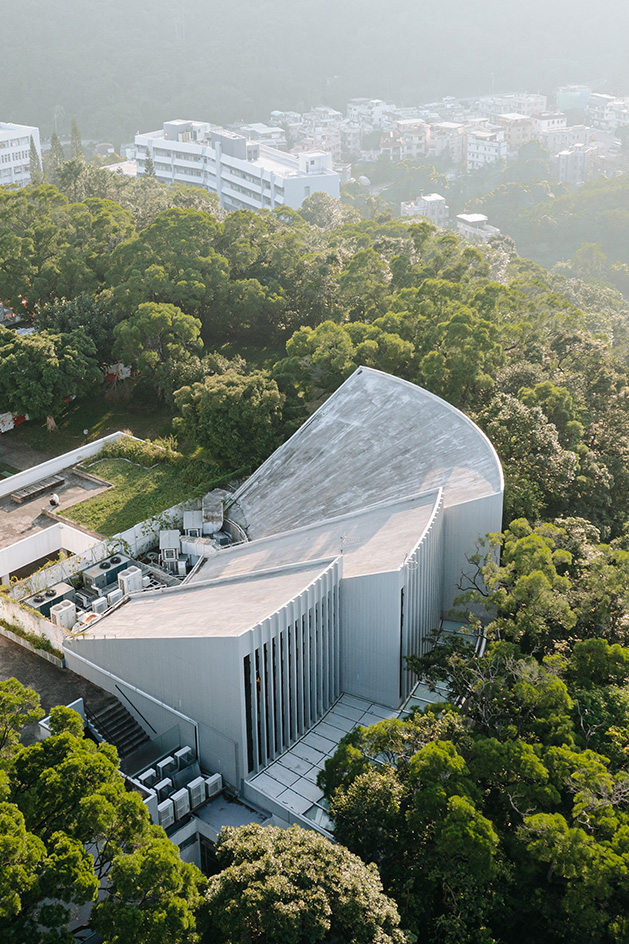
‘I never expected Hong Kong's architecture to be so fascinating and meaningful, especially without the typical influence of capitalism,‘ says Bob Pang, a Hong Kong Chinese architect, who founded the Brutalism Hong Kong Research Group in 2021. Over the past four years, the team of 20 researchers has uncovered and documented over 40 examples of brutalist architecture in the city, both standing and demolished. They have curated two exhibitions, authored a key publication, and contributed to numerous talks and lectures across China and Asia.
Their latest project, the bilingual Brutalist Hong Kong Map, advocates for the city's hidden architectural heritage, linking it to the global brutalist narrative and engaging the global network of devoted followers.

Join our architecture tour of Hong Kong brutalism
The research, supported by Design Trust, a non-profit funding platform, and Leigh & Orange Architects, with roots in Hong Kong since 1874, has uncovered the missing pieces of the city’s architectural history from the 1950s to the 1970s, piecing together a picture that had never been fully formed. Unsurprisingly, Hong Kong’s brutalist architecture was heavily influenced by the British brutalist movement, with many key figures having studied in the UK or collaborated with renowned British architects like Denys Lasdun and John Bonnington.

A wave of designs with a strong sense of geometry began to shape Hong Kong’s architectural landscape in the mid-1960s, including the expressive Chinese Methodist Church North Point (Szeto Wai, 1965) and the Mies van der Rohe-influenced Chun Hom Kok Architect’s Residence (Jackson Wong, 1966).
By the 1970s, as local brutalism reached its peak, several iconic structures emerged, each contributing something unique to the movement: the bold, line-crossing Diocesan Youth Retreat Hostel and Chapel (Samn Lim, 1971); the interlocking forms of Chung Chi Hall Student Centre (Dennis Lau, 1972); and the UFO-shaped Stewards Pooi Tun Secondary School (Ronald Poon, 1975).

The findings evidently revealed how these structures adapted to Hong Kong's rapid urban growth, hilly terrain and subtropical climate. Designed with vertical integration, they maximised compact spaces for multiple uses, including workshops, offices, canteens, leisure areas, and parking. The Eastern Sea Industrial Building (Peter Pun, 1975), a cargo-sized, ‘pre-cast pre-stressed’ structure, exemplifies this approach by combining various uses in a single high-rise.

Transparent facades, such as climate-responsive brise soleil and ventilation blocks, seen in St Stephen's College Special Room Block (Tao Ho, 1981), offered natural cooling before air conditioning became widely affordable. The swift construction of buildings like the Shaw Brothers Studio Production Unit (Peter Pun, 1968), completed in just five months, reflects the era's rapid urban development, where longevity was perhaps not a primary concern.

‘The post-war architects tackled social issues with designs of exceptional spatial and construction quality, producing brutalist buildings that are both deeply connected to the local context and uniquely reflective of their time,’ Pang says. Since the economic boom of the 1980s, many iconic buildings have been demolished to make way for larger, more luxurious curtain wall structures, while others have been extensively renovated.

Only a few remain in their original, well-preserved state. The Brutalist Hong Kong Map seeks to document these surviving gems, while also encouraging a rediscovery of their charm and a rethinking of the city's evolving urban landscape.

‘For a day trip exploring Hong Kong's Brutalist architecture, start at The Chinese University of Hong Kong in the New Territories, where you can easily walk between over twenty brutalist buildings, all conveniently close together.’ Pang said, ‘Then move to the Hong Kong Island, begin at the Chinese Methodist Church in North Point, then take the metro to St Joseph’s Primary School in Wan Chai.'

'From there, hop on a tram to Happy Valley to see Smiley Court apartments. End your day with a minibus ride to Island South to visit the Residence of Jackson Wong in Chung Hom Kok, and enjoy a sunset at the nearby beach to cap off the experience.’








